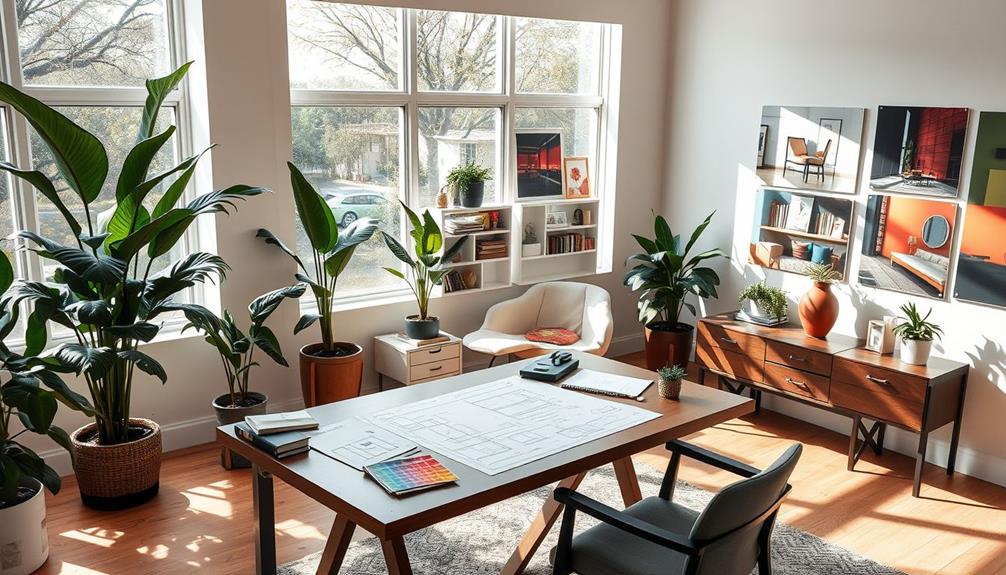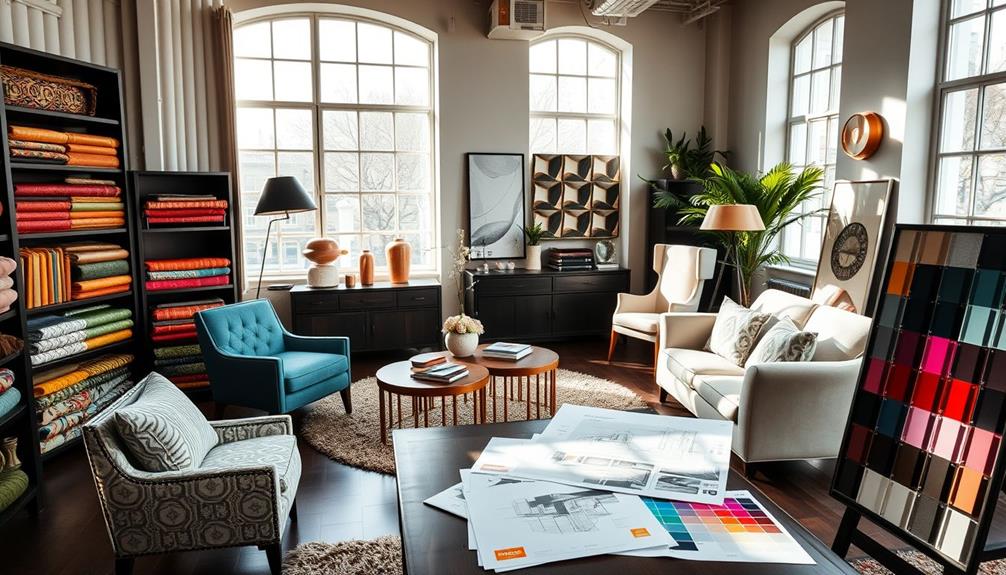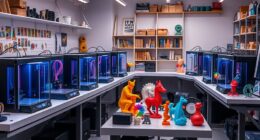To learn interior design yourself, start by exploring structured online courses that teach essential concepts like color theory and spatial awareness. Gather inspiration through platforms like Pinterest and Instagram to help you create digital mood boards that reflect your unique style. Engage in hands-on projects or volunteer for community design work to gain practical experience. Analyze your collected ideas for consistent themes, and don't forget to experiment with various design elements. By documenting your design journey, you'll track your growth and creativity. There's plenty more to uncover about refining your skills and style. When looking for interior design course tips, consider joining online communities and forums where you can connect with fellow aspiring designers and professionals. This will provide valuable networking opportunities and a supportive environment for sharing ideas and receiving feedback. Additionally, don’t underestimate the value of seeking mentorship from experienced designers who can provide valuable guidance and advice as you navigate the world of interior design.
Key Takeaways
- Explore online courses and resources, such as HomeEnvy Bootcamp, for foundational knowledge in interior design principles and practices.
- Gather inspiration from platforms like Pinterest and Instagram to curate design ideas and create visual mood boards.
- Experiment with different design styles and elements to develop your unique aesthetic and document your progress.
- Gain practical experience by volunteering for projects, assisting friends, or undertaking DIY makeovers to apply design concepts.
- Engage with online design communities and forums to exchange ideas, seek feedback, and gain insights from fellow enthusiasts.
Educate Yourself Effectively
To kickstart your journey in interior design, you can effectively educate yourself through a variety of resources available online and offline. Start by exploring structured courses on platforms like HomeEnvy Bootcamp, which will introduce you to essential design basics without requiring formal education.
These courses often cover key concepts such as color theory, lighting effects, and spatial awareness—critical for your development. Additionally, immersing yourself in various design styles, such as Mid-Century Modern Design, can inspire your creative vision and expand your knowledge.
Don't overlook the value of books and instructional videos; they can deepen your understanding and provide fresh ideas. Online tutorials are particularly beneficial for learning at your own pace. Engage in online forums and communities where you can exchange ideas and gain insights from both self-taught designers and industry professionals.
Furthermore, look for local workshops or webinars that focus on practical design skills. This hands-on approach allows you to apply your theoretical knowledge to a real project, enhancing your learning experience.
Find Inspiration Everywhere
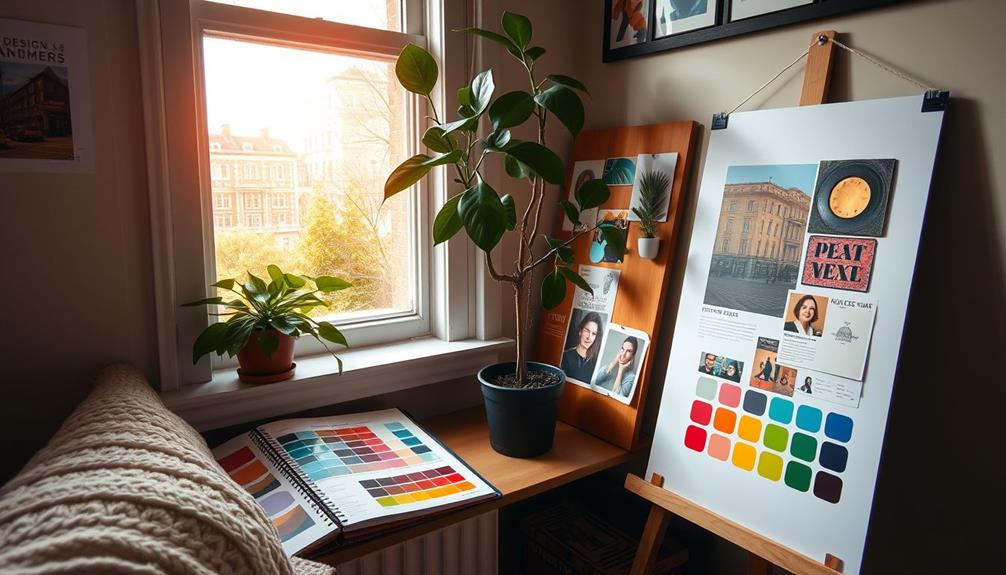
Inspiration can be found in countless places, and embracing this can elevate your interior design journey. You can gather inspiration by utilizing platforms like Pinterest and Instagram to collect and organize design ideas. Creating digital mood boards that reflect your unique aesthetic helps you visualize your thoughts.
Exploring various environments also sparks creativity. Consider visiting homes, hotels, and museums to see how different design elements come together. Document inspiring designs through photography and scrapbooking to build a tangible reference for your future projects.
Below is a table that outlines different sources for inspiration:
| Source | Method | Benefits |
|---|---|---|
| Websites | Mood boards | Visualize your ideas |
| Local events | Networking | Exchange ideas with others |
| Blogs & Magazines | Trend updates | Stay current with designs |
| Photography | Scrapbooking | Create a personal reference |
| Real-life settings | Observing | Understand practical design |
Following design blogs and attending workshops further enhances your perspective, ensuring you always have a steady stream of inspiration. Embrace these opportunities to fuel your creativity!
Develop Your Unique Style

As you immerse yourself in the world of interior design, developing your unique style is essential for standing out and expressing your identity.
Start by analyzing your collected inspiration to identify recurring themes and preferences that resonate with you. For instance, you might find yourself drawn to the current modern farmhouse decor trends that emphasize neutral color palettes and natural materials.
Study the work of self-taught designers like Kelly Hoppen and Studio McGee; they've embraced their individuality to create distinctive styles.
To visualize your personal design direction, create a digital mood board that reflects your aesthetic. This board should compile images, colors, and textures that inspire you.
As you refine your style, remember to:
- Experiment with different design elements, such as color palettes and furniture arrangements.
- Regularly document your design choices and projects to track your evolution.
- Embrace trial and error; discovering what combinations best express your individuality is part of the journey.
Create Moodboards for Practice

Creating moodboards is a powerful way to practice your design skills and clarify your vision. Start by gathering images and materials that inspire you, like photos of furniture, color palettes, and decor items. This helps you create a cohesive vision for your moodboard.
Utilize digital tools like Canva or Pinterest to organize and manipulate images easily. This allows for quick experimentation with different layouts and design concepts. In the context of designing small spaces, consider elements from the Tiny House Movement to maximize functionality and aesthetic appeal.
Incorporate specific elements such as texture swatches, paint samples, and fabric choices to provide a tangible sense of the overall aesthetic you want to achieve. Writing brief narratives or notes alongside each moodboard can explain your design choices and how they cater to a hypothetical client's needs and preferences.
This practice not only sharpens your skills but also enhances your ability to communicate your ideas effectively.
Don't forget to regularly revisit and revise your moodboards as you learn new skills and gather more inspiration. This way, your personal design style will evolve and develop over time, just like established interior designers.
The more you practice, the more confident you'll become in your design journey.
Gain Practical Experience
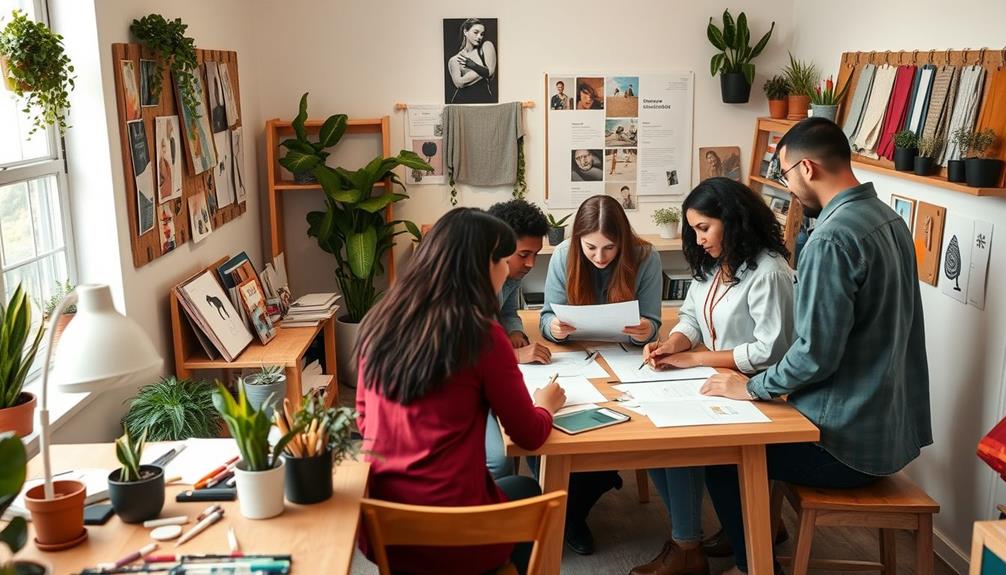
Building on the foundation established through moodboards, gaining practical experience is essential to developing your interior design skills. Engaging in hands-on projects helps you apply design principles in real-world scenarios. You can start by volunteering for community projects or assisting friends with their interior design needs. This not only allows you to gain practical experience but also expands your network.
To further enhance your skills, consider these approaches:
- Undertake DIY room makeovers and document your process to build a portfolio.
- Participate in workshops or local design classes for direct insight from professionals.
- Utilize design software like SketchUp or AutoCAD to create floor plans and 3D models, enhancing your technical skills.
Conclusion
To sum up, diving into self-taught interior design can be incredibly rewarding. Remember, about 80% of interior designers are self-employed, showcasing the demand for unique, personal styles in the industry. By continuing to educate yourself, seeking inspiration, and gaining practical experience, you can carve out your niche. Embrace the journey of developing your own aesthetic, and don't be afraid to experiment. Your creative vision can truly transform spaces and make a lasting impact!

